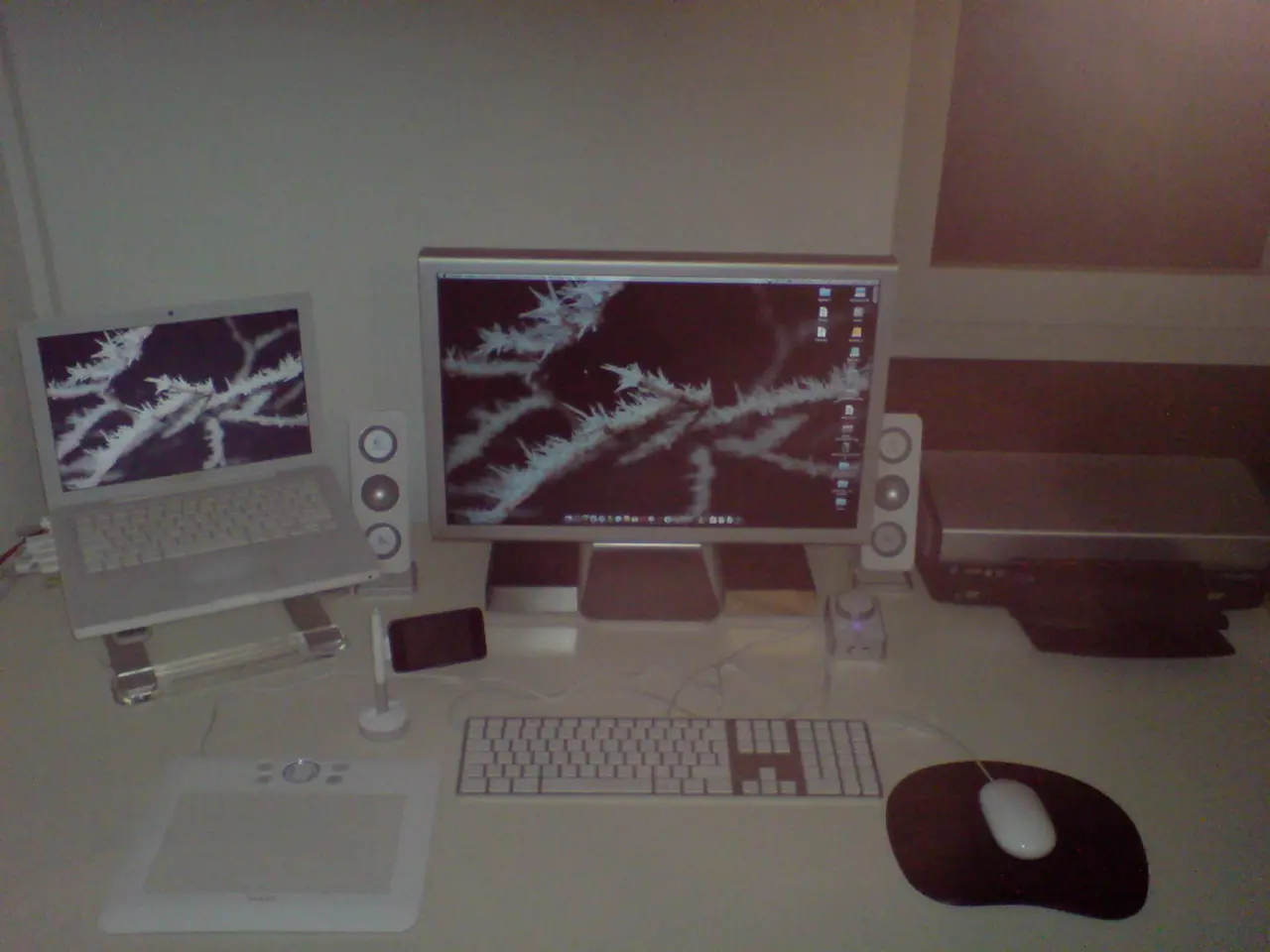"Linux-equipped PineTab-V, the first tablet to utilize RISC-V technology, is now available for purchase at a price of $159"
The 2025 RISC-V Summit China is underway, and the event has generated a wave of excitement about the open-source RISC-V instruction set architecture. One of the standout announcements at the summit is the release of the PineTab-V, a RISC-V-based tablet that now comes with a functional Linux operating system.
The PineTab-V, priced at $159, is not a powerhouse for heavier workloads such as video editing. However, it marks a significant milestone in the RISC-V ecosystem, demonstrating the capability of RISC-V-based system-on-chip in mobile computing applications.
The tablet runs a desktop Linux environment out of the box, thanks to its Debian-based operating system. This is a notable achievement, as the current popular rich Linux distributions, such as Debian and upcoming Ubuntu releases targeting RISC-V, have been demonstrated to run on RISC-V hardware like the PineTab-V.
Debian, in particular, has a mature RISC-V port (riscv64) that supports RV64GC hardware baseline and compiles about 98% of packages for RISC-V. This is the distribution used on the PineTab-V. Ubuntu, on the other hand, is moving towards requiring RVA23 profile compatibility for upcoming releases. Ubuntu 26.04 LTS (April 2026) will be the first LTS targeting RVA23.
The PineTab-V features a 10.1-inch IPS screen, a 2-megapixel front camera, a 5-megapixel rear camera, and a detachable magnetic keyboard. Users can now interact with a GNOME desktop, open a browser, type documents, and even play simple games on a RISC-V chip. The device has also been shown running lightweight games, further highlighting its capabilities.
The ongoing RISC-V Summit China is a reflection of the growing momentum in the RISC-V ecosystem, signaling expanding opportunities for RISC-V in mainstream electronics. Another significant development is Nvidia's announcement of CUDA support for RISC-V processors, which could further accelerate the adoption of RISC-V in the tech industry.
The RISC-V ecosystem is showing growing confidence in its maturity, as evidenced by the PineTab-V and the ongoing RISC-V Summit China. With the addition of a functional Linux operating system, the PineTab-V represents a working example of a consumer RISC-V device. This could pave the way for more RISC-V-based devices in the future, bringing the benefits of open-source, customisable hardware to mainstream electronics.
Interestingly, the PineTab-V was initially released in 2023 without any operating system. However, a functional one was added as of March 2025. Another piece of good news for RISC-V enthusiasts is that Steam now supports RISC-V through an emulator, further expanding the software ecosystem for RISC-V.
In summary, the PineTab-V, a RISC-V tablet, has demonstrated the capability of RISC-V-based system-on-chip in mobile computing applications beyond embedded systems. Its Debian-based Linux operating system tailored for RISC-V provides a robust, feature-complete Linux experience comparable to those on more established instruction set architectures. The ongoing RISC-V Summit China and the growing support for RISC-V from major tech companies signal a bright future for the RISC-V ecosystem.
- The PineTab-V, now running a functional Linux operating system, showcases the potential of RISC-V-based system-on-chip in the mobile computing market, moving beyond traditional embedded systems.
- With popular Linux distributions such as Debian and future Ubuntu releases successfully running on RISC-V hardware like the PineTab-V, the RISC-V ecosystem is increasingly becoming a viable alternative in the technology industry.




